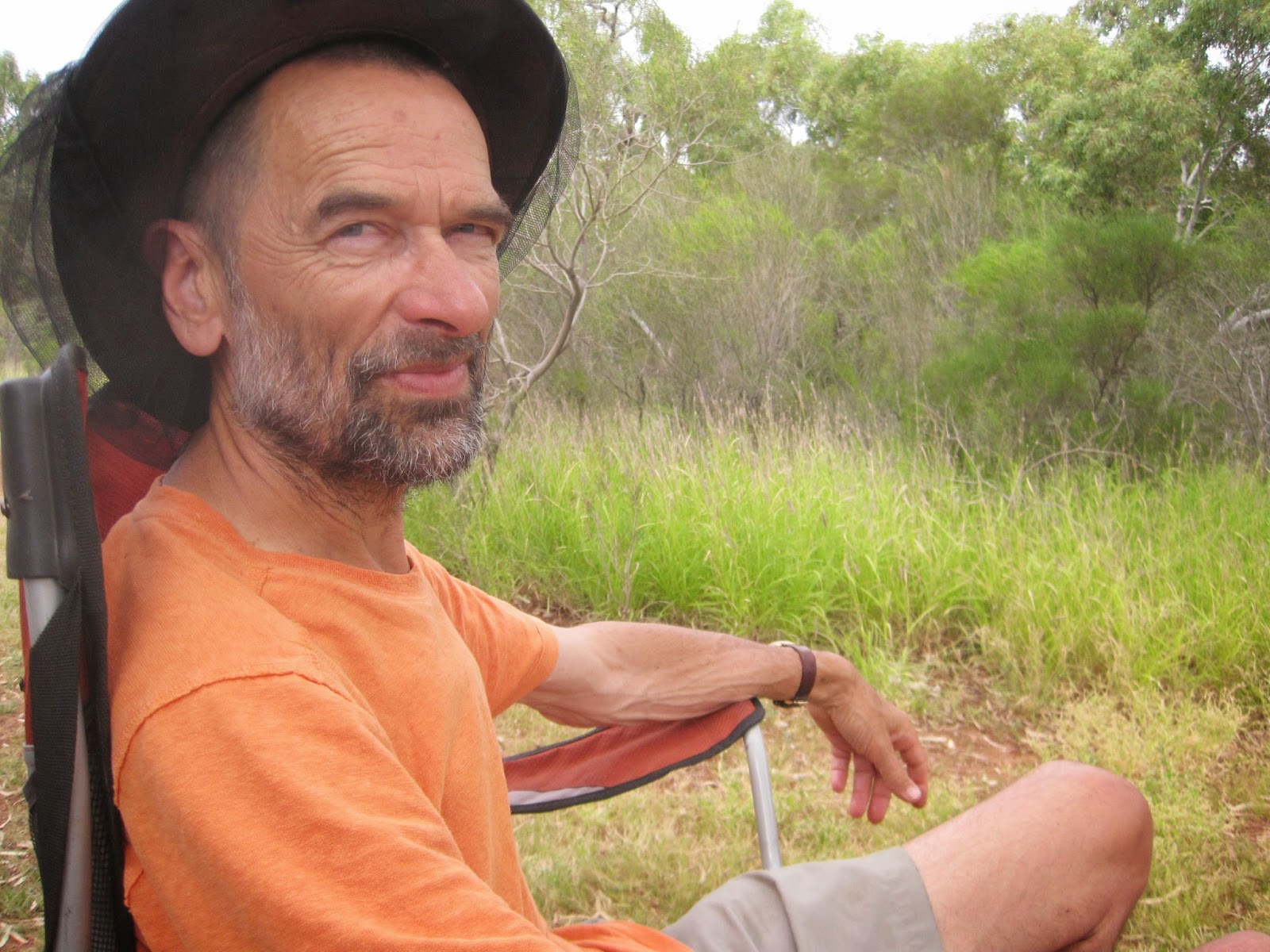The chorus of accolades from friends praising Johan’s new
fit and healthy body still ring in our ears*. He likes to dance a jig when people
marvel at how able he is now. For me, traveling with my partner is a whole new
ballgame. Gone are the solo walks while he stays back at camp nursing an
over-reactive back. No more endless rounds of sitting patiently (or not so)
while he gets over his pain attacks so we can get on with dinner, driving,
setting up or taking down camp. He’s as fit and energetic now, at nearly 65, as
he was twenty years ago, when we first started exploring the wild places of
outback Australia.
One stunning example of this is our first night camping in
the bush. After nine hours in a car, the body’s stiff and the heart rate
sluggish. At our recent stay at Michael and Suzanne’s in Fremantle we learned
about HIT exercise, something they’re both passionate about. Don’t worry, I had
to google it too. The book they loaned me assumed reader knowledge of this
apparently oft-used acronym. High Intensity Training claims you can reach a
good level of fitness with twenty to thirty minutes of exercise a week,
provided it’s ‘high intensity’.
We played with an example of this Monday night: 30 seconds
of sprinting (as fast as you can possibly run), followed by 90 seconds of
moderately paced walking. We did this round five times and got our heart rates
to just over 130 beats a second. If we did this routine three or four times a
week, we’d be fit for life – or so the HIT advocates claim. We’re game to give
it a try. HIT enthusiasts like to boast longevity as another bonus of the regime.
Tuesday, Day 3, is another long car sit. Our destination is
somewhere between Karijini National Park and Port Hedland, a total of about 700kms driving time.
The Albert Tognolini Rest Area on the northeast end of the park puts to rest
our best laid plans however. I drive up into the reserve ostensibly for a photo
op: the streams of rolling hills breaking off into red rock canyons – quintessential
Karijini – are mesmerizingly beautiful, especially in the late afternoon sun. I
manage to convince a reluctant Johan to stop for the night, an hour early but
it allows time for a trek into the canyon. It’s hot, dry and waterless (no
deliciously cool rock pools as there are inside the park), but I couldn’t be
happier, exploring these ancient red canyons off the beaten track with a
companion I never thought I’d be able to hike with again.
A cool beer takes the edge off the dust and heat while we
watch distant storms light up portions of the darkening sky. Streaks of
lightning rip across the horizon where the sun has left a stain of deep red.
After dinner we turn our chairs around and wait for the rising moon to provide
our next hour of entertainment. By the time we retire into the campervan – the doors
and windows wide open to let the soft breeze in – the air is still stiflingly
hot. I soak my bandana in a bowl of water and drape it over my naked body. It
takes several rounds of this over the next few hours before the night air
finally cools enough to pull the thin sheet over our bodies for protection.
*Johan was cured of twenty years of
debilitating back pain from surgery in Seattle, Washington, January 2013.




No comments:
Post a Comment